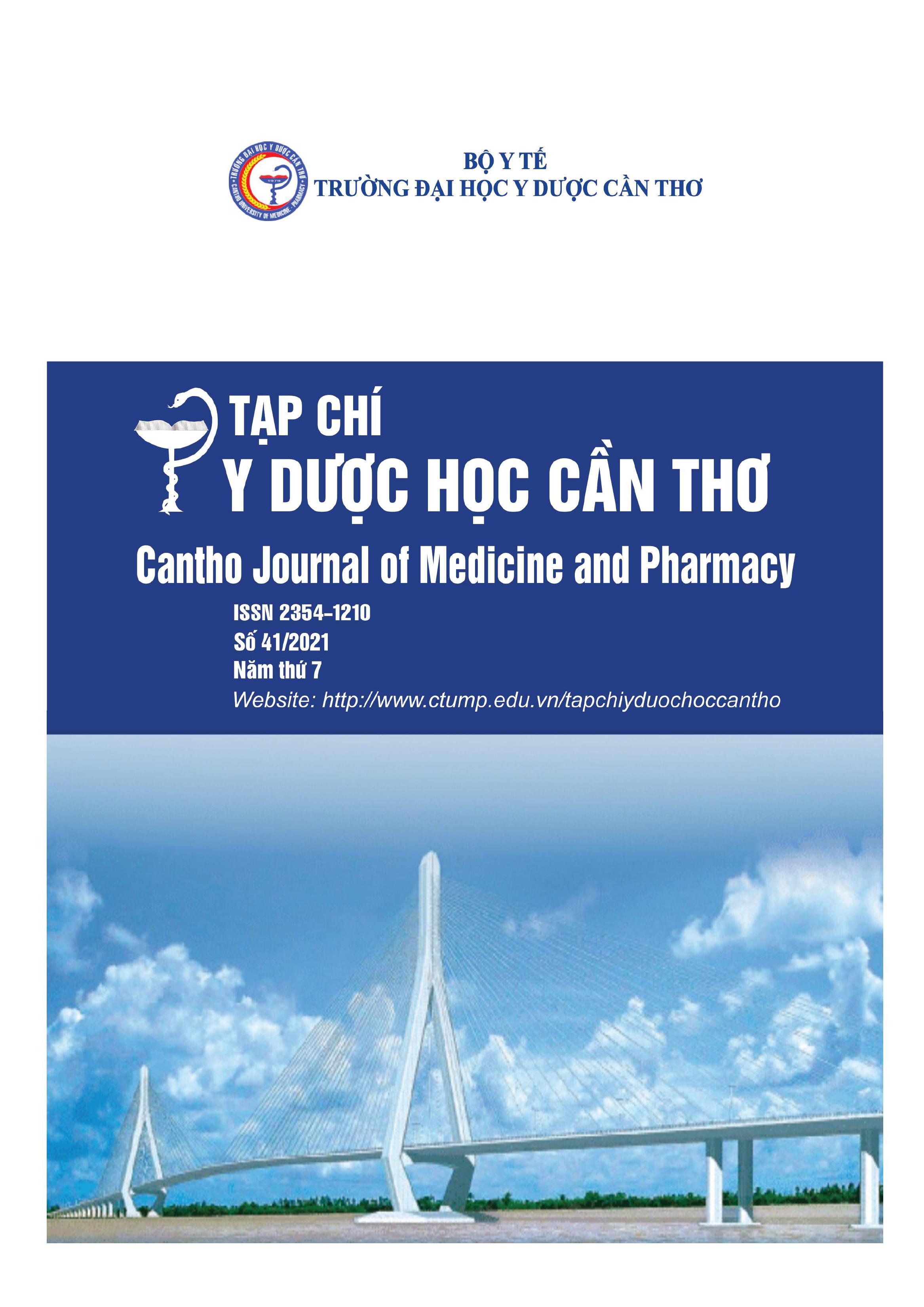FACTORS RELATED TO GLYCEMIC CONTROL IN DIABETES INPATIENTS AT THE INTERNAL MEDICINE DEPARTMENT OF CAN THO UNIVERSITY OF MEDICINE AND PHARMACY HOSPITAL IN 2017-2020
Main Article Content
Abstract
Can Tho University of Medicine and Pharmacy
Background: The target of diabetes mellitus treatment is controlling blood glucose well, otherwise it will lead to many adverse clinical outcomes. Studying about factors related to control blood glucose of type 1 diabetes and type 2 diabetes inpatients is always a matter of concern. Objectives: 1. Determining the ratio of blood glucose control in diabetes inpatients who were treated at the internal medicine department. 2. Surveying related factors on blood glucose control of diabetes inpatients. Materials and methods: A cross sectional descriptive study was conducted on 390 medical records of type 1 diabetes and type 2 diabetes inpatients who were treated at the internal medicine department of Can Tho University of Medicine and Pharmacy Hospital in 20172020. Data were analyzed by using SPSS 26.0 software. Results: The proportion of good blood glucose control was 67.4%. Three factors related to poor blood glucose control included HbA1c before admission ≤ 7 (OR=9.40; 95%CI=2.19-40.31; p=0.003), total disease number > 3 (OR=1.84; 95%CI=1.07-3.18; p=0.028) and using corticosteroid (OR=3.13; 95%CI=2.04-5.38; p<0.001). Conclusion: Three factors such as HbA1c before admission, total disease number and using corticosteroid related to poor blood glucose control.
Article Details
Keywords
Diabetes mellitus, blood glucose control, insulin
References
2. Huỳnh Quang Minh Trí (2017), Đánh giá tình trạng kiểm soát đường huyết ở bệnh nhân đái tháo đường típ 2 điều trị nội trú, Tạp chí y học TP.HCM, 22(2), tr.332-336.
3. Nguyễn Thanh Truyền (2019), Nghiên cứu tình hình kiểm soát đường huyết ở bệnh nhân đái tháo đường type 2 điều trị nội trú bằng insulin tại Bệnh viện Đa khoa thành phố Cần
Thơ, Luận văn chuyên khoa cấp 2, trường Đại học Y Dược Cần Thơ.
4. American Diabetes Association (2017), “Standards of Medical Care in Diabetes - 2017", Diabetes Care, 40(1), pp.S1-S131.
5. American Diabetes Association (2019), “Standards of Medical Care in Diabetes - 2019", Diabetes Care, 42(1), pp.S1-S193.
6. Botella M., Rubio J. A. (2011), “Glycemic control in non-critical hospitalized patients”, Endocrinología y Nutrición (English Edition), 58(10), pp.536- 540.
7. Fong A. C., Cheung N. W. (2013), “The high incidence of steroid-induced hyperglycaemia in hospital”, Diabetes research and clinical practice, 99(3), pp.277-280.
8. Iglay K., Hannachi H. (2016), “Prevalence and co-prevalence of comorbidities among patients with type 2 diabetes mellitus”, Current medical research and opinion, 32(7), pp. 1243-1252.
9. International Diabetes Federation (2019), IDF Diabetes Atlas: Ninth edition, pp. 1-168.
10. Jelinek H. F., Osman W. M. (2017), “Clinical profiles, comorbidities and complications of type 2 diabetes mellitus in patients from United Arab Emirates”, BMJ Open Diabetes Research and Care, 5(1), pp.1-9.
11. Kodner C., Anderson L. (2017), “Glucose management in hospitalized patients”, American family physician, 96(10), pp. 648-654.
12. Mchugh M. D., Shang J. (2011), “Risk factors for hospital-acquired ‘poor glycemic control’:
a case–control study”, International Journal for Quality in Health Care, 23(1), pp. 44-51.
13. Tamez-Pérez H. E., Quintanilla-Flores D. L. (2015), “Steroid hyperglycemia: prevalence, early detection and therapeutic recommendations: a narrative review”, World journal of diabetes, 6(8), pp.1073-1081.


